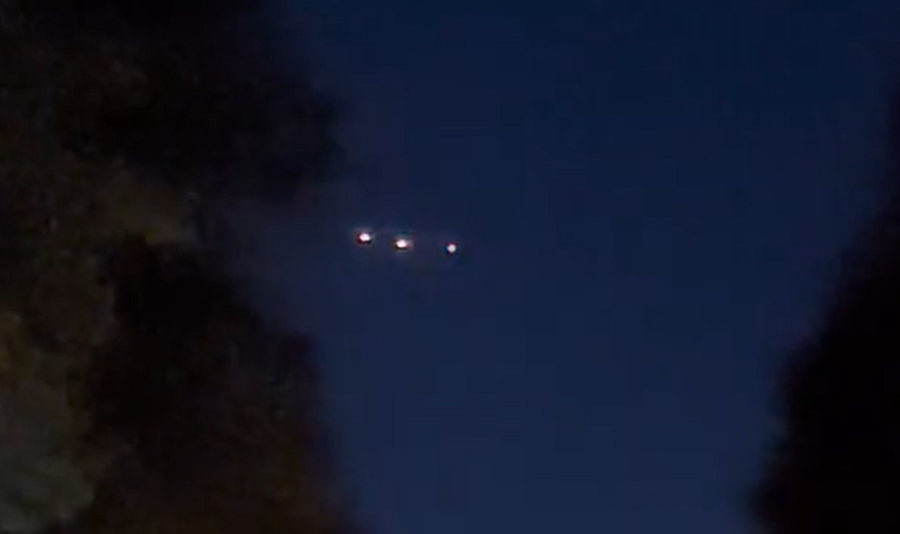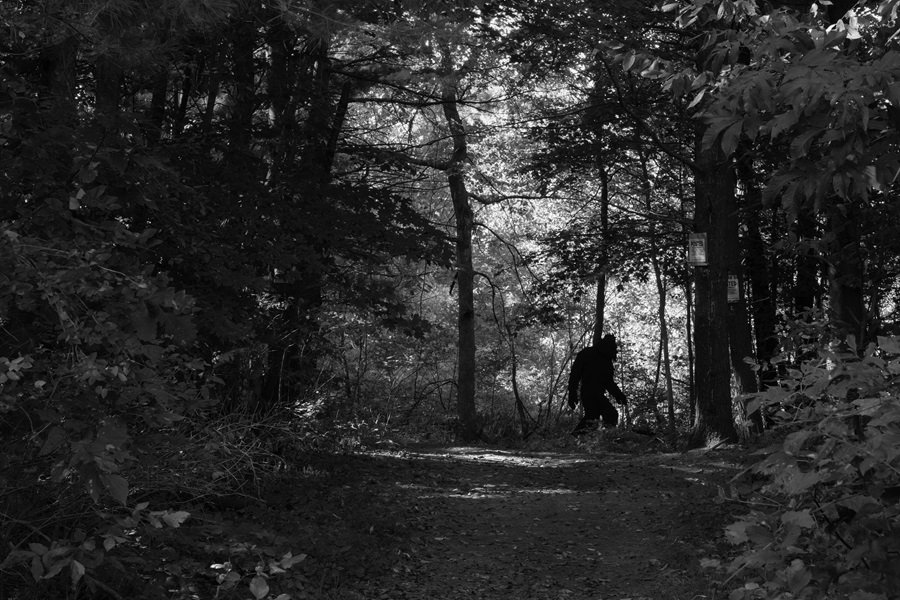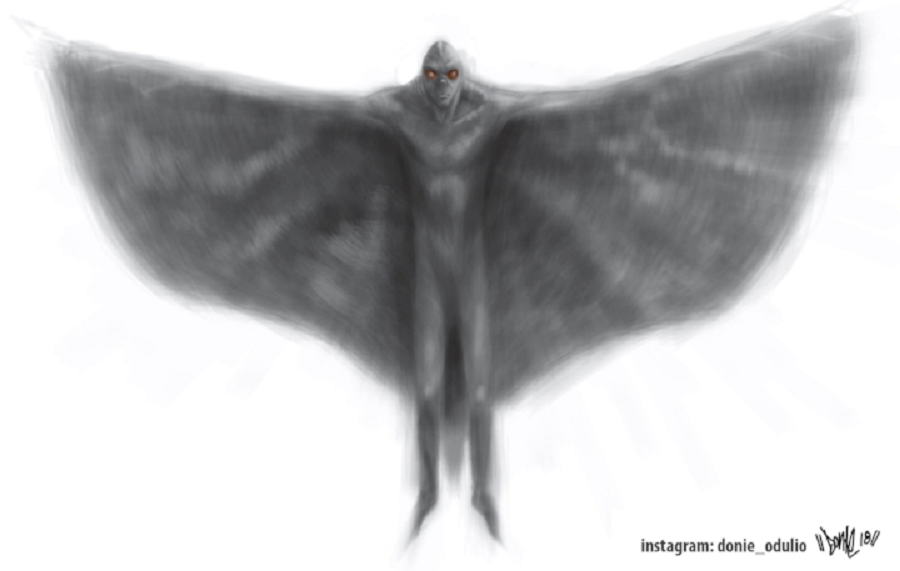"We Don’t Have Good Explanations for Some of the Things That We’ve Seen," Says Former US Director of National Intelligence about UFOs
Former Director of National Intelligence John Ratcliffe, pictured next to a still from the ‘GIMBAL’ video, officially released by the Pentagon in April 2020.
John Ratcliffe, who served as the United States’ Director of National Intelligence under Donald Trump for eight months from 2020 to 2021, said in a recent interview with Maria Bartiromo for Fox News that “we don’t have good explanations for some of the things that we’ve seen” when it comes to UFO sightings by government and military personnel.
Ratcliffe’s statement came while answering a question about a report commissioned by the Senate Intelligence Committee regarding “unidentified aerial phenomena,” which is the current government nomenclature for UFOs. The committee tasked the Director of National Intelligence (DNI)—in consultation with the Secretary of Defense—with creating the report, setting a deadline of 180 days after the legislation into which it was written had passed.
The directive was detailed under the heading Advanced Aerial Threats in their Intelligence Authorization Act for Fiscal Year 2021, and read:
The Committee supports the efforts of the Unidentified Aerial Phenomenon Task Force at the Office of Naval Intelligence to standardize collection and reporting on unidentified aerial phenomenon, any links they have to adversarial foreign governments, and the threat they pose to U.S. military assets and installations. However, the Committee remains concerned that there is no unified, comprehensive process within the Federal Government for collecting and analyzing intelligence on unidentified aerial phenomena, despite the potential threat. The Committee understands that the relevant intelligence may be sensitive; nevertheless, the Committee finds that the information sharing and coordination across the Intelligence Community has been inconsistent, and this issue has lacked attention from senior leaders.
Therefore, the Committee directs the DNI, in consultation with the Secretary of Defense and the heads of such other agencies as the Director and Secretary jointly consider relevant, to submit a report within 180 days of the date of enactment of the Act, to the congressional intelligence and armed services committees on unidentified aerial phenomena (also known as ‘‘anomalous aerial vehicles’’), including observed airborne objects that have not been identified.
The committee directed that eight items be included in the report:
1. A detailed analysis of unidentified aerial phenomena data and intelligence reporting collected or held by the Office of Naval Intelligence, including data and intelligence reporting held by the Unidentified Aerial Phenomena Task Force;
2. A detailed analysis of unidentified phenomena data collected by:
a. geospatial intelligence;
b. signals intelligence;
c. human intelligence; and
d. measurement and signals intelligence;
3. A detailed analysis of data of the FBI, which was derived from investigations of intrusions of unidentified aerial phenomena data over restricted United States airspace;
4. A detailed description of an interagency process for ensuring timely data collection and centralized analysis of all unidentified aerial phenomena reporting for the Federal Government, regardless of which service or agency acquired the information;
5. Identification of an official accountable for the process described in paragraph 4;
6. Identification of potential aerospace or other threats posed by the unidentified aerial phenomena to national security, and an assessment of whether this unidentified aerial phenomena activity may be attributed to one or more foreign adversaries;
7. Identification of any incidents or patterns that indicate a potential adversary may have achieved breakthrough aerospace capabilities that could put United States strategic or conventional forces at risk; and
8. Recommendations regarding increased collection of data, enhanced research and development, and additional funding and other resources.
Furthermore, "the report shall be submitted in unclassified form, but may include a classified annex," meaning much of the information contained within could be available to the public.
"This actually is a program that’s been in place for a few years in terms of a task force that has been there under the national defense authorization act, but as you correctly point out, Maria, there is now a report that will be issued by the Pentagon, by the Secretary of Defense, and the Director of National Intelligence," Ratcliffe said of the report. "I actually wanted to get this information out and declassified before I left office, but we weren’t able to get it down into an unclassified format that we could talk about quickly enough."
"But frankly, there are a lot more sightings than have been made public," he added. "Some of those have been declassified."
According to Ratcliffe,
When we talk about sightings, we are talking about objects that have been seen by Navy or Air Force pilots or have been picked up by satellite imagery, that frankly engage in actions that are difficult to explain—movements that are hard to replicate that we don’t have the technology for or travelling at speeds that exceed the sound barrier without a sonic boom. So, in short, things that we are observing that are difficult to explain. And so, there’s actually quite a few of those, and I think that information is being gathered and will be put out in a way that the American people can see.
We always when we see these things, Maria, we always look for a plausible explanation. You know, weather can cause disturbances, visual disturbances, sometimes we wonder whether or not our adversaries have technologies that are a little bit further down the road than we thought or we realized. But there are instances where we don’t have good explanations for some of the things that we’ve seen. And when that information becomes declassified, I’ll be able to talk a little bit more about that.
When asked if he could say where the objects had been seen, Ratcliffe replied that unidentified flying objects had been sighted “all over the world, there have been sightings all over the world, and when we talk about sightings, the other thing I will tell you is, it’s not just a pilot or just a satellite or some intelligence collection, usually we have multiple sensors that are picking up these things.”
Some of the sightings, he said, represent an "unexplained phenomenon, and there are actually quite a few more than have been made public."
The 180-day deadline given by the Senate Intelligence Committee expires June 1st, meaning the public should see the report by then.
The report follows the Pentagon’s official release in April 2020 of three unclassified UFO videos shot by Navy fighter pilots, and continues an interest in UFOs shown by several senators that has developed after years of testimony by defense and intelligence personnel.
To report your own encounter with the impossible, reach out to us directly at the Singular Fortean Society through our contact page.
If you enjoyed this article and would like to support the Singular Fortean Society, please consider becoming an official member by signing up through our Patreon page—membership includes a ton of extra content and behind-the-scenes access to the Society’s inner workings.




















